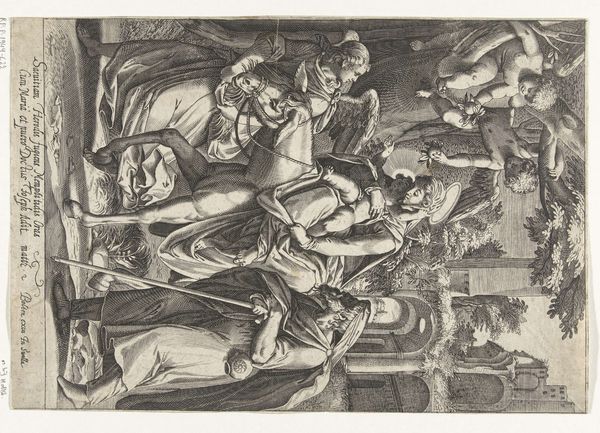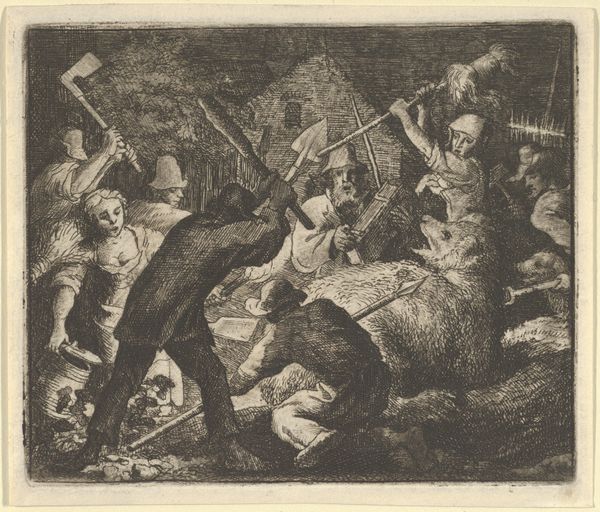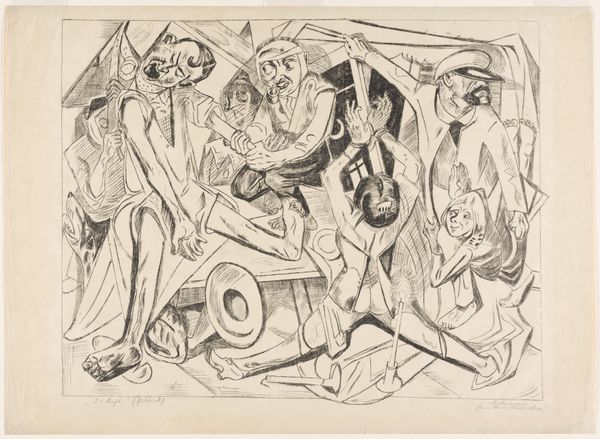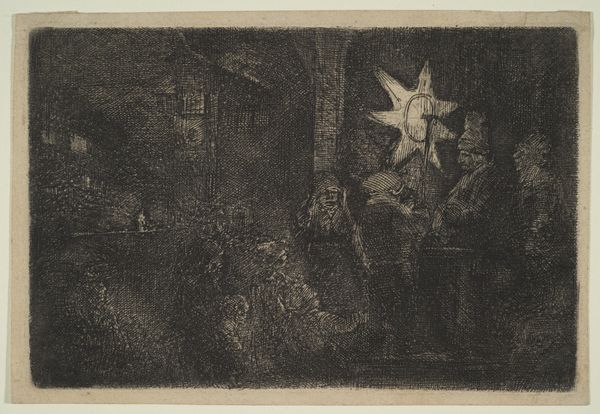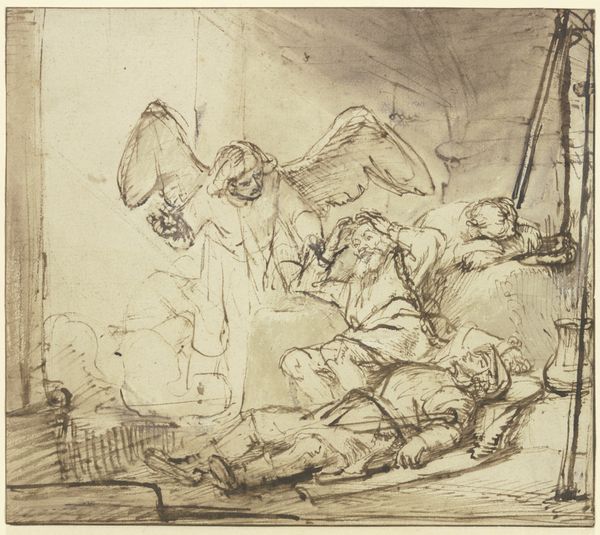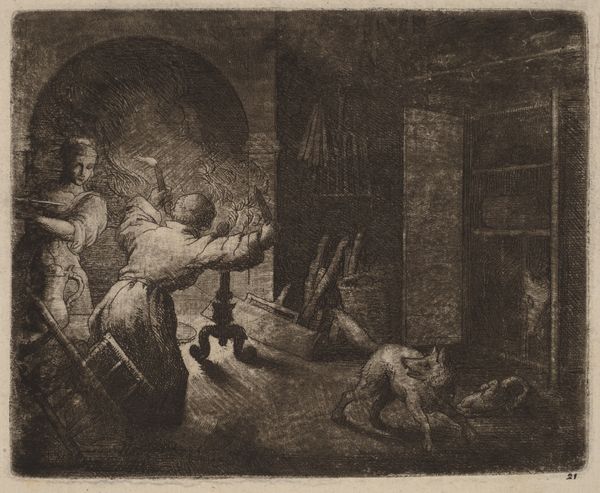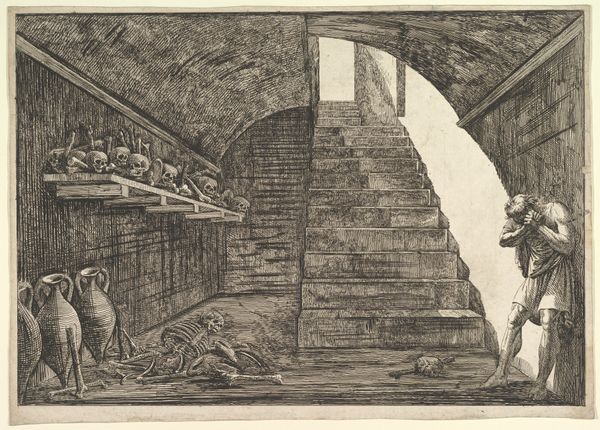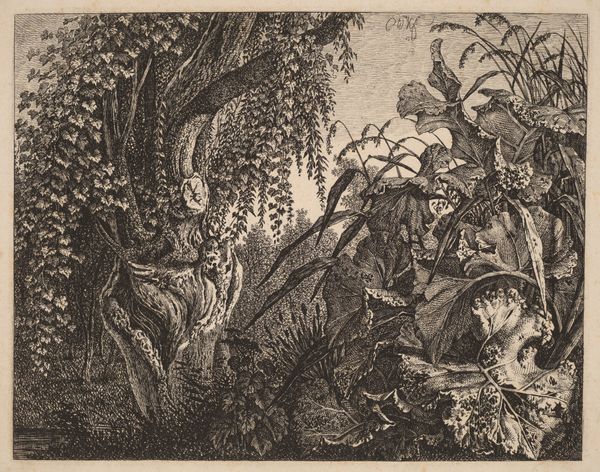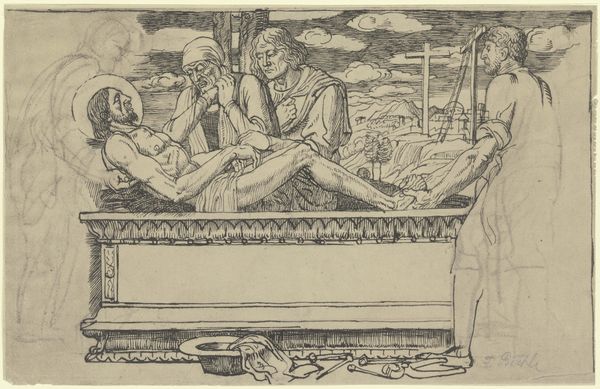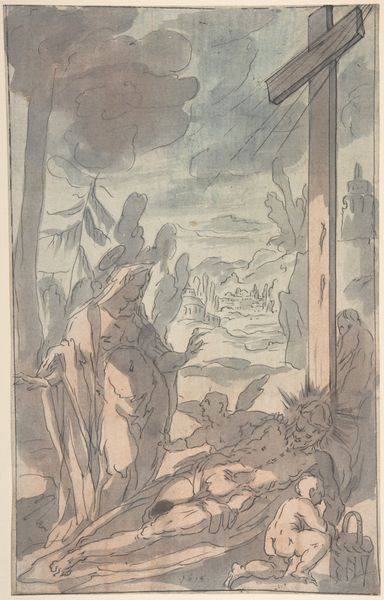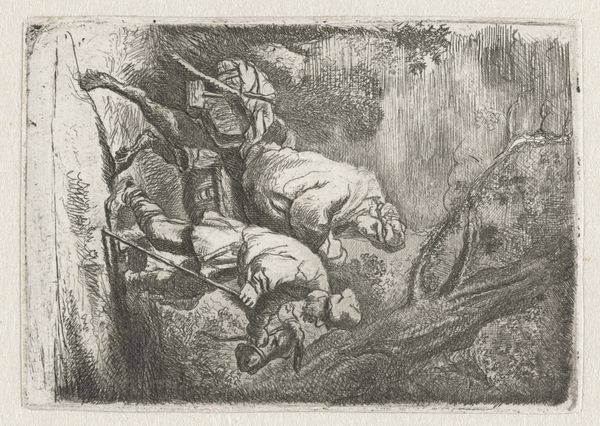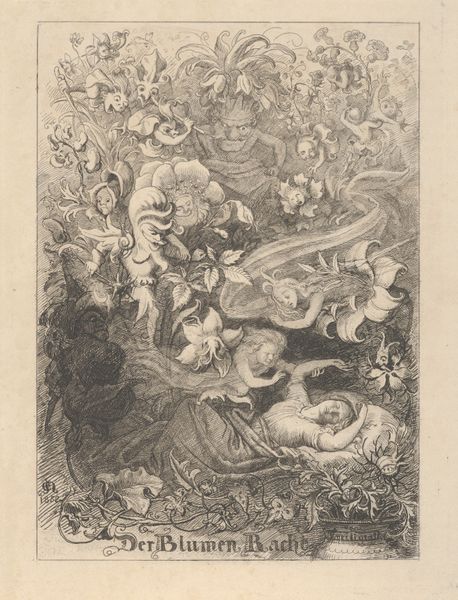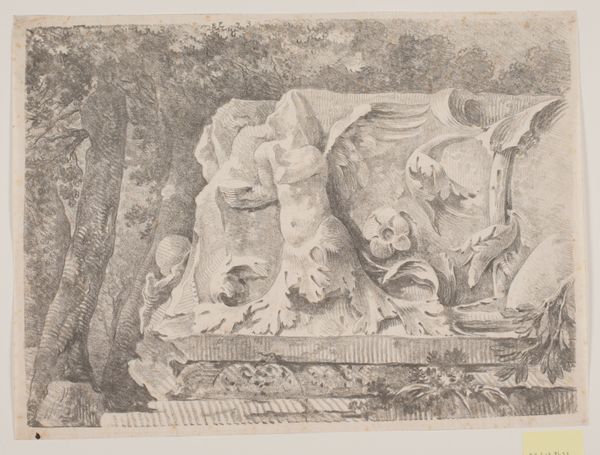
drawing, print, engraving
#
drawing
# print
#
caricature
#
figuration
#
romanticism
#
line
#
history-painting
#
engraving
Dimensions: plate: 11 9/16 x 14 3/8 in. (29.4 x 36.5 cm) sheet: 14 1/8 x 18 7/8 in. (35.9 x 47.9 cm)
Copyright: Public Domain
Curator: James Gillray's 1792 engraving, "Tom Paine's Nightly Pest," presents a fascinating look at political caricature. Editor: It’s definitely a busy composition, almost overwhelming with its density of figures and symbols. My first thought is that the texture really creates this unsettling, dreamlike state. What’s Paine been up to? Curator: Well, Gillray's satirical print depicts Tom Paine, author of "Rights of Man," tormented in his sleep. We need to remember this was during a period of intense political upheaval, with the French Revolution in full swing and anxieties running high in Britain about radical ideas spreading. Editor: You can see that anxiety practically oozing from the textures and detail in this print. The use of engraving allows for such sharp, precise lines—almost brutal in their clarity, you could even say. Note the stock, the hangman's noose looming behind these so called defenders of justice. Curator: Absolutely. Gillray, known for his scathing wit, paints Paine as a villain, haunted by nightmares of revolution and moral decay. Paine's "Rights of Man" advocated for the inherent equality and rights of all individuals. Figures symbolizing radical philosophies hover menacingly above him. Consider the figures in hoods seated atop a list of revolutionary crimes - an almost monstrous, terrifying rendition. Editor: These dream elements seem almost tangible; there’s weight to them, rendered so carefully. His quill and books lie nearby too. Look how it turns mundane objects like a bed of straw into these tools, amplifying feelings of torment through careful layering. Curator: Precisely. And beyond just the individual, Paine, Gillray’s print really grapples with anxieties about the erosion of social order and traditional values that are embedded within conservative elements that reigned in the courts. By making these radical concepts monstrous, Gillray contributes to a specific, political discourse. Editor: It all funnels back to materiality. The act of making a print— the plates, the ink, the pressing—these materials themselves carry a political charge when used to create works with revolutionary or reactionary messages. Curator: Ultimately, Gillray’s piece underscores the volatile socio-political climate of the time. It's a stark reminder that these anxieties surrounding class, equity, and philosophical divergence aren't necessarily bound to this time alone. Editor: I'll agree. Paying attention to material and means reminds us just how easily something handmade like this reflects the political tension of the era, still vibrating from the presses today.
Comments
No comments
Be the first to comment and join the conversation on the ultimate creative platform.
